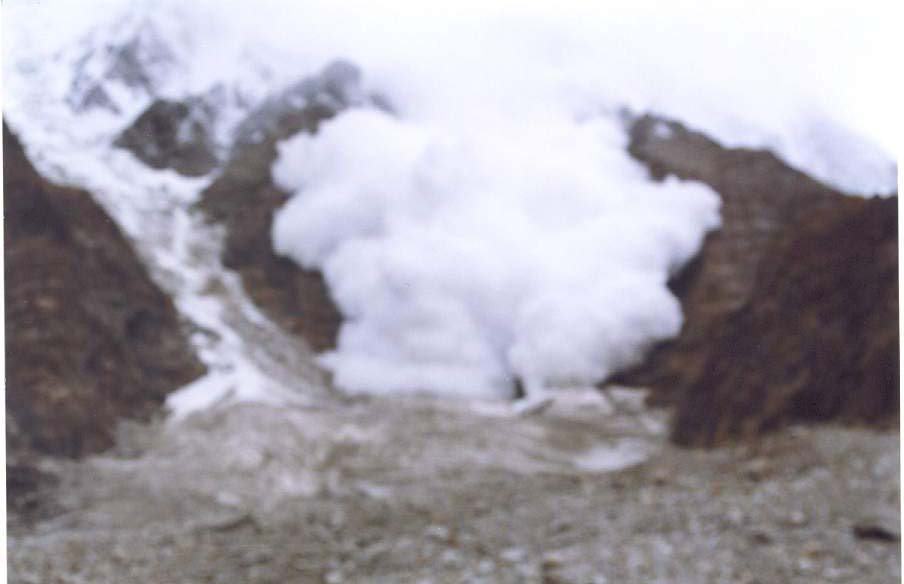|
|
BATURA PASTURES
It is a U shape valley. It is alignment is from northwest to southeast, situated on the northwest of the KKH and Passu village. Batura pastures are located on the both sides of Batura Glacier, in the south lies the area of Hussaini and in the north is Passu. The people of Hussaini have the right to graze forty oxen in the pastures of Passu. These are seasonal settlements for four months from May to September.
|
|
|
PASTURES IN HUSSAINI
In Hussaini good grazing grounds on high pastures are available to the people. These pastures are not restricted for any tribes. All the Sesonik have the right to use all kind of resources available on the pastures. They can build houses on the pastures. They can use these pastures according to their access. These pastures are utilized from May to September. In winter these are not habitable due to heavy snowfall. In winter grazing is only possible in the near to settlements.
A number of pastures of Hussaini are given below are used by the villagers.
Mulungin, Pasth Garben, Wuch Garben, Kirgaswashk, Wudmur, Maidun
|
|
|
BATURA GLACIER
Batura Glacier, which is 57 km long, and a number of peaks more than 7,000 meters high flaking the glacier, e.g. Batura I (7785 m), Passu peak (7678 m) are the heighest peaks of the Batura Range.
The Batura glacier terminus in both well known and of considerable local significance because it descends so close to the Hunza River. Historically it is known to have occupied a position either close to, or across, the Hunza River and may even have created a temporary dam in the past, with resultant flood damage to the villages of Passu and Hussaini. Since the 1940's, however, the glacier has retreated quite rapidly until 1966. Since that time it has again tended to advance steadily and is at present 700 m from the Hunza River(. This later advance caused a considerable damage to the Karakoram Highway and led to the intensive study carried out by the Chinese investigation group. They concluded from ice flux, ablation and velocity studies, that the glacier should stop advancing during the period 1997 - 1997, with a predicted further advance of 180 m - 240 m before that time, taking to within 300 m of the Highway. Starting from the 1990's they predict that the glacier will once again decline and this will last for at least 20 to 30 years.
It is notable that the Batura, which is a longitudinal valley glacier of great size and complexity, does not having a similar temporal fashion to the much smaller and relatively simple transverse glaciers hitherto described. The phase of rapid advance in the early part of this century displayed by those glaciers did not occur on the Batura, which remained virtually stationary from 1885 to the 1940's. However, the retreat which occurred in the 1950's and 1960's and the subsequent advance (both real and predicted) perhaps shows a pattern which is related to advanced to larger scale changes in the regional environment.
BATURA PASTURES
It is a U shape valley. It is alignment is from northwest to southeast, situated on the northwest of the KKH and Passu village. Batura pastures are located on the both sides of Batura Glacier, in the south lies the area of Hussaini and in the north is Passu. The people of Hussaini have the right to graze forty oxen in the pastures of Passu. These are seasonal settlements for four months from May to September.
|
 |
MASS WASTING IN BATURA (SOUTH)
Mass wasting is the common geomorphic phenomena in the Batura southern pastures. The following mass wasting types are common in the area.
SNOW AVALANCHES
Snow avalanche is also common in Batura pastures. In winter heavy sow falls on the top of the mountains, and wind accumulate them in the depressions and it comes down in the form of avalanches. In some places it remains throughout the year, i.e., Chiwtokh Shhot and Nowgarch Yaz. Snow avalanche damages a lot of natural forests every year. The inhabitants of the seasonal settlements use them as firewood. Sometime it also kills the wild life, when they are graze in the areas, where snow avalanches are common. Sometimes it damages the houses and animal shades.
ROCK SLIDING
Rock sliding is one of the common geomorphic process is these pastures. It is very difficult to travel particularly in the rainy days. Some places are very famous for rook sliding which are locally called "Khumreg". It damages the natural forests and also some time kills the wild life. In summer season, when cattle are gazing there, it kills a number of goats and sheep.
According to this field survey rockslide has killed 26 cattle in three years, 1998 to 2000.
b. DEBRIS FLOW
When torrential rain falls in these pastures, debris started flow in different gullies. It also damages the natural forests of these areas. A debris flow was occurred in 1994 at Baj Yarz and damaged forest over a considerable area.
BATURA AS A TOURIST SPOT
Batura provides beautiful scenery to foreign tourists. It attracts people from all over the wold to Hunza valley. Thousands of tourists travel Batura every year, because it is one of the famous and 8th longest glaciers of the wold. Although the easy way to Batura is from the south of Batura glacier but the northern side is advertised in most of guide books and maps. All the scenery and peaks are situated in the south of Batura glacier. The middle of this glacier is white and the both sides are black with materiel load. At some places small glaciers have merged with each other and formed medial moraines.
|
|

